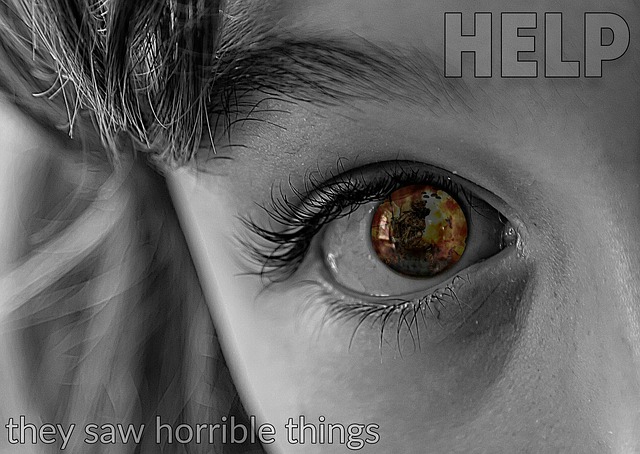Edith Eger in her book The Gift: 12 Lessons to Save Your Life, discusses the “the prison of self-neglect”. Habituated behaviours that underlie self-neglect can arise through adverse childhood experiences, an abusive relationship or a deficient developmental environment. Edith suggests that self-neglect often arises because of unmet childhood needs – specifically the need for “attention, affection and approval”. Our own needs are neglected in order to fill the gap left by unfulfilled childhood needs. So we pursue the “A’s” (mentioned above) at the expense of our present needs. An aspect of self-neglect is the avoidance of expressing strong emotions for fear of causing discomfort to others.
Factors leading to self-neglect
We might have had parents who offered conditional love – on condition that we met their high standards in sport, academic or other achievements. Their expectations about our performance can create a dependency whereby we are forever seeking approval or acceptance. We might have suffered neglect as a child through the conscious choice of parents or their own adverse circumstances. This can lead to our continuously seeking attention. In one of my workshops, one participant proved to be continually disruptive through constant challenge to anything other participants said. It turned out she was seeking attention and approval because she was denied this as a very young child – being expected to contribute meaningfully to adult conversation when still very young.
Sometimes self-neglect can arise as a result of the role we played as a child or young adult. Family circumstances may have led to our being the “responsible one”, “the carer” or “the earner”. These roles may have been necessary at the time but the unspoken expectation that comes with the role can continue into adulthood. Edith recounts the story of a client who was imprisoned by the self-expectations that arose as a result of a childhood role as the “reliable one”. This led to continual self-neglect in pursuit of other people’s needs – often unexpressed but assumed. The result was personal burnout as well as depriving others of the opportunity to develop independence. Sometimes creating dependence on ourselves fulfills our desire to be needed. This was something that Gabor Maté discussed as contributing to his need to be a workaholic medical practitioner.
Gabor maintains that underlying many addictions is an unmet need arising from early childhood. The addiction, whatever form it takes, is an ineffectual way to address the pain arising from parental neglect, abuse or inattention. His “compassionate inquiry” approach is designed to unearth the early triggering event(s), the resultant negative self-message and the reward sought through the addictive behaviour.
Overcoming the imprisonment of self-neglect
The fundamental rule to freeing ourselves from the prison of self-neglect, is to begin to put ourselves back into the picture, to have self and our needs as part of the equation when trying to decide how to spend our energy and time. Edith suggests that there are a number of ways to do this:
- Savour the things and people in our life that bring us joy. We can start small with a few minutes each morning spent appreciating the little things in our life – noticing a new leaf or flower on an indoor plant, reflecting on a picture or painting that generates positive feelings, or valuing a person who has shown us kindness, thoughtfulness or generosity. Savouring what is good in our life can extend to appreciating the development of our children, accomplishments and rewards, the wonders of our subconscious mind, the capacity to think and create and our relationships (even our relatives). We can actively seek to let joy into our lives.
- Appreciating nature – nature has a healing power and enables us to cultivate all our senses and develop our sense of wonder and awe. In nature, we can be lost in the beauty, the sounds, the textures and the smells that surround us. We can actually find ourselves in this process of being lost in something immense and awe-inspiring that is beyond ourselves.
- Edith herself adopted an affirmation that expresses something of her uniqueness and what she has been able to contribute to the world. We can all find the words to reflect the positive things we have contributed to others and what makes us a truly unique person. In the process, we can value the people who helped make us who we are – our parents and their positive traits, our mentors and their wisdom, and our teachers who willingly shared their knowledge and insights.
- Reflect on an occasion where you were asked for something or to do something. Ask yourself what were your thoughts and feelings at the time. What was driving your choices? How much of looking after yourself was reflected in your response. How could you have responded in a way that did not involve self-neglect, e.g. expressing your true feelings. Are there habituated behaviours that you engage in that continually overlook your own needs?
- Explore the balance in your life. Edith suggests that we keep a record (for a short period) of how we spend our day in terms of how we allocate time to work, play and love. Does work absorb all our time and energy at the expense of our needs for nurturing, relaxation and time to ourselves. How often do we allow ourselves to become absorbed in a hobby, creation or charitable activities or just enjoy social activities with friends or family.
Reflection
With the busyness of life, it is so easy to lose ourselves through self-neglect. There are often hidden forces underpinning this neglect, so self-exploration is important to unearth what drives our behaviour. As we grow in mindfulness through observation and reflection, we can gain the necessary self-awareness and insight to understand ourselves and develop the courage to make changes to the way we live our life.
Edith maintains that we do not change until we are ready to make the change and often this is driven by a need to change habits that no longer serve us in a positive way. Any changes we make to our behaviour, no matter how small, need to be reinforced by savouring our achievement. From Edith’s perspective, change involves the process of “finding the real you”.
_________________________________
Image by Perez Vöcking from Pixabay
By Ron Passfield – Copyright (Creative Commons license, Attribution–Non Commercial–No Derivatives)
Disclosure: If you purchase a product through this site, I may earn a commission which will help to pay for the site, the associated Meetup group, and the resources to support the blog.


